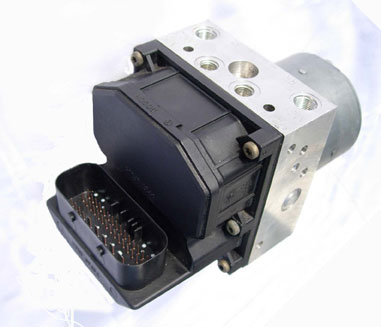| |
 |
| 1 |
Earth |
| 2 |
Battery supply |
| 3 - 4 |
Not used |
| 5 |
Earth |
| 6 |
Battery supply |
| 7 |
Throttle position request (only on KV6 models with ETC) |
| 8 - 10 |
Not used |
| 11 |
Diagnostic ISO 9141 K line |
| 12 |
Front left ABS sensor |
| 13 |
Rear left ABS sensor |
| 14 |
Rear left ABS sensor |
| 15 |
Front right ABS sensor |
| 16 |
Front right ABS sensor |
| 17 |
Brake system/ handbrake/ EBD warning lamp |
| 18 |
Front right wheel speed (to instrument pack) |
| 19 |
Rear right wheel speed (to navigation system) |
| 20 |
Throttle position response (only on KV6 models with ETC) |
| 21 |
Not used |
| 22 |
Traction control reset (only on KV6 models with ETC) |
| 23 |
Ignition supply |
| 24 |
CAN bus, high line (only on models with ETC) |
| 25 - 26 |
Not used |
| 27 |
ETC switch (only on models with ETC) |
| 28 |
Front left ABS sensor |
| 29 |
Not used |
| 30 |
Rear right ABS sensor |
| 31 |
Rear right ABS sensor |
| 32 |
Brake switch |
| 33 |
ABS warning lamp |
| 34 |
Rear left wheel speed (to navigation system) Output |
| 35 |
Front left wheel speed (to ECM and cruise control ECU) |
| 36-39 |
Not used |
| 40 |
CAN bus, low line (only on models with ETC) |
| 41 - 42 |
Not used |
 BOSCH ABS 5.7 - System Overview
BOSCH ABS 5.7 - System Overview BOSCH ABS 5.7 - Known Fitments
BOSCH ABS 5.7 - Known Fitments BOSCH ABS 5.7 - Physical Details
BOSCH ABS 5.7 - Physical Details
 BOSCH ABS 5.7 - Pin Outs
BOSCH ABS 5.7 - Pin Outs